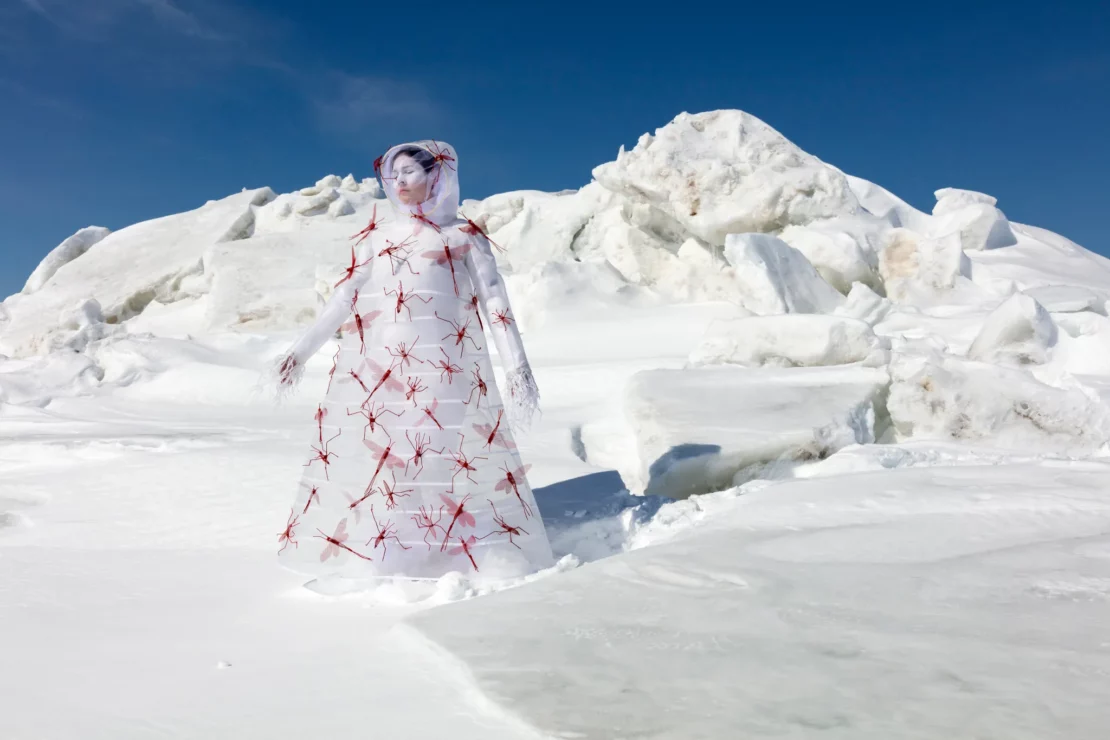Five art shows in the Twin Cities and Winona, Minnesota, confront the historical impact of migration and colonization. From Indigenous handcrafts, textiles, and beadwork to archival photographs of immigrants, the exhibitions reflect on the enduring scars of the past while offering pathways for healing and reconciliation. Delving into the experiences of displaced communities, Black, Indigenous, and people of color (BIPOC) artists cultivate spaces for collective healing and understanding.

(To Heal)” exhibit at All My Relations gallery in Minneapolis. Credit: Provided by
Racquel Banaszak
The healing power of cultural restoration
“What is it like to migrate? To move? To be a human being in this world?” asks Swedish artist and curator Stina Folkebrant when exploring avenues to convey and honor the experiences of Indigenous communities through art.
The American Swedish Institute (ASI) is collaborating with All My Relations Arts, an American Indian nonprofit art gallery, to address these questions through two shows.
At the heart of ASI’s “Arctic Highways: Unbounded Indigenous People” exhibition are the works of Folkebrant and Sámi artist Tomas Colbengston, whose collaboration gave birth to ASI’s “Mygration” installation. Inspired by a documentary about the migration of Sámi reindeer herders to North America, the show intertwines Folkebrant’s paintings depicting scenes of reindeer herding and the eight seasons in Sámi culture with Colbengston’s archival prints of Sámi immigrants.
“I never thought about making art about it,” Colbengston said, “so it was a good way to discover history and visualize the Sámi people, and migration, and nature.”
“We are here now, but what do we do with the history?” Folkebrant’s question echoes throughout the exhibition, which features 12 Indigenous artists from Sámpi, the Sami people’s traditional territory, and North America. These artists will explore the concept of being “unbounded” — the imposition of nation-state borders without consideration for Indigenous landscapes. Through various mediums such as photography, video, sculpture, textiles, and traditional Sámi handcrafts, the show portrays the resilience and adaptation of Indigenous peoples in the face of colonization and cultural assimilation.
“Art is a good tool to connect when you have this language barrier and when you share some similar history of colonization especially,” Colbengston said. “I believe that the Indigenous people in America, and the Sámi, and the Siberia people, are like brothers and sisters.”
In response to “Arctic Highways,” All My Relations Arts presents “Okizi (To Heal),” which gathers local and crossborder Indigenous voices to explore migration, identity, and resilience.
The exhibition showcases a range of art forms, including Keith BraveHeart’s ongoing mural “Buffalo Nation: Creating Community,” Courtney M. Leonard’s multimedia exploration of water and material sustainability, Adrienne Keene’s beadwork, basketry, and twinework, and Delia Touché’s textile pieces and family archival photos, among others.
How to attend “Arctic Highways”
Date: Saturday, February 3 to May 26, 2024
Time: 10 a.m. to 8 p.m. on Thursday. 10 a.m. to 4 p.m. on Tuesday, Wednesday, Friday, Saturday, and Sunday.
Location: American Swedish Institute 2600 Park Ave., Minneapolis
Cost: $13 for adults, $10 for seniors 62 and up, $6 for youth 6-18 and university students with ID. Free for children under 5.

